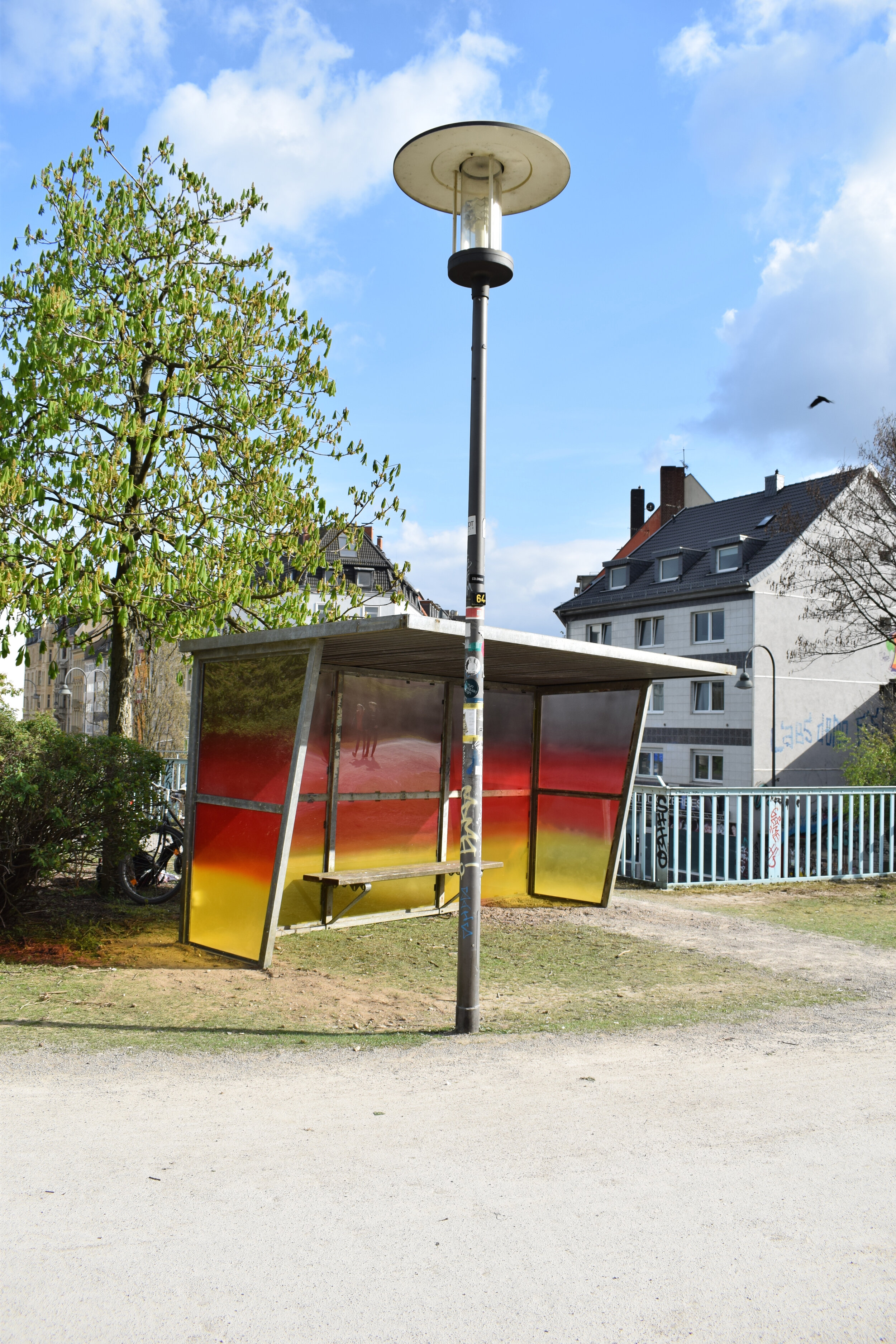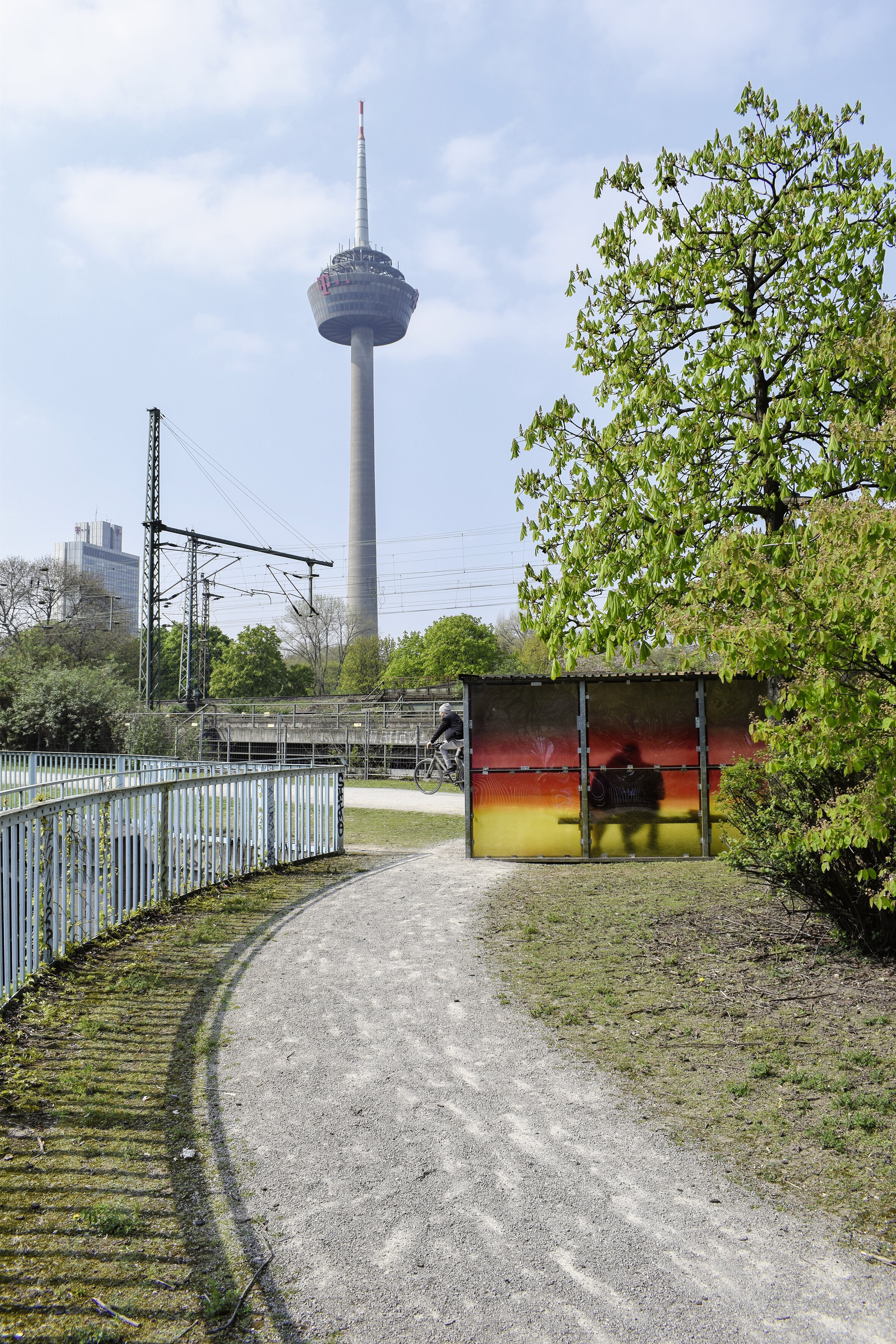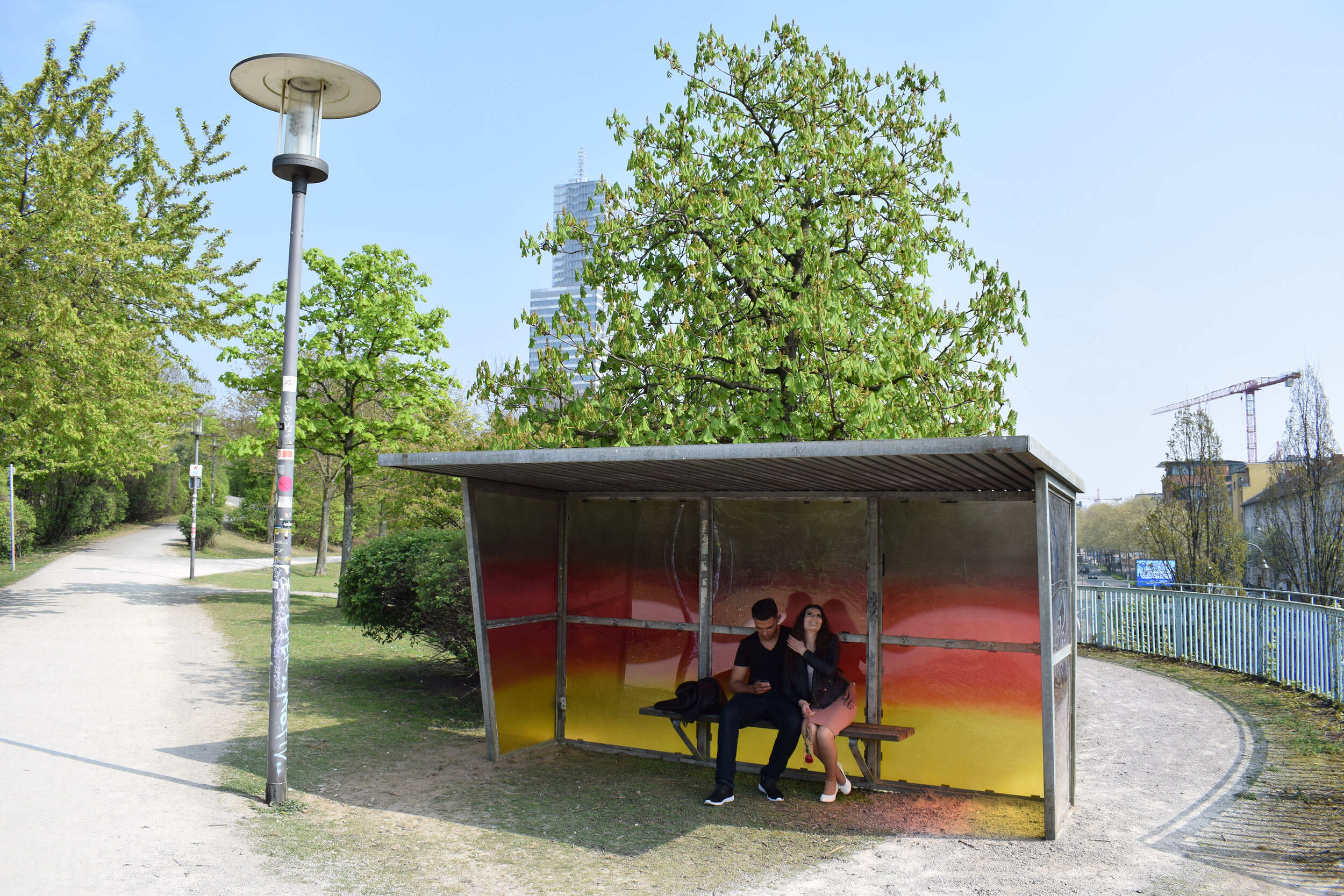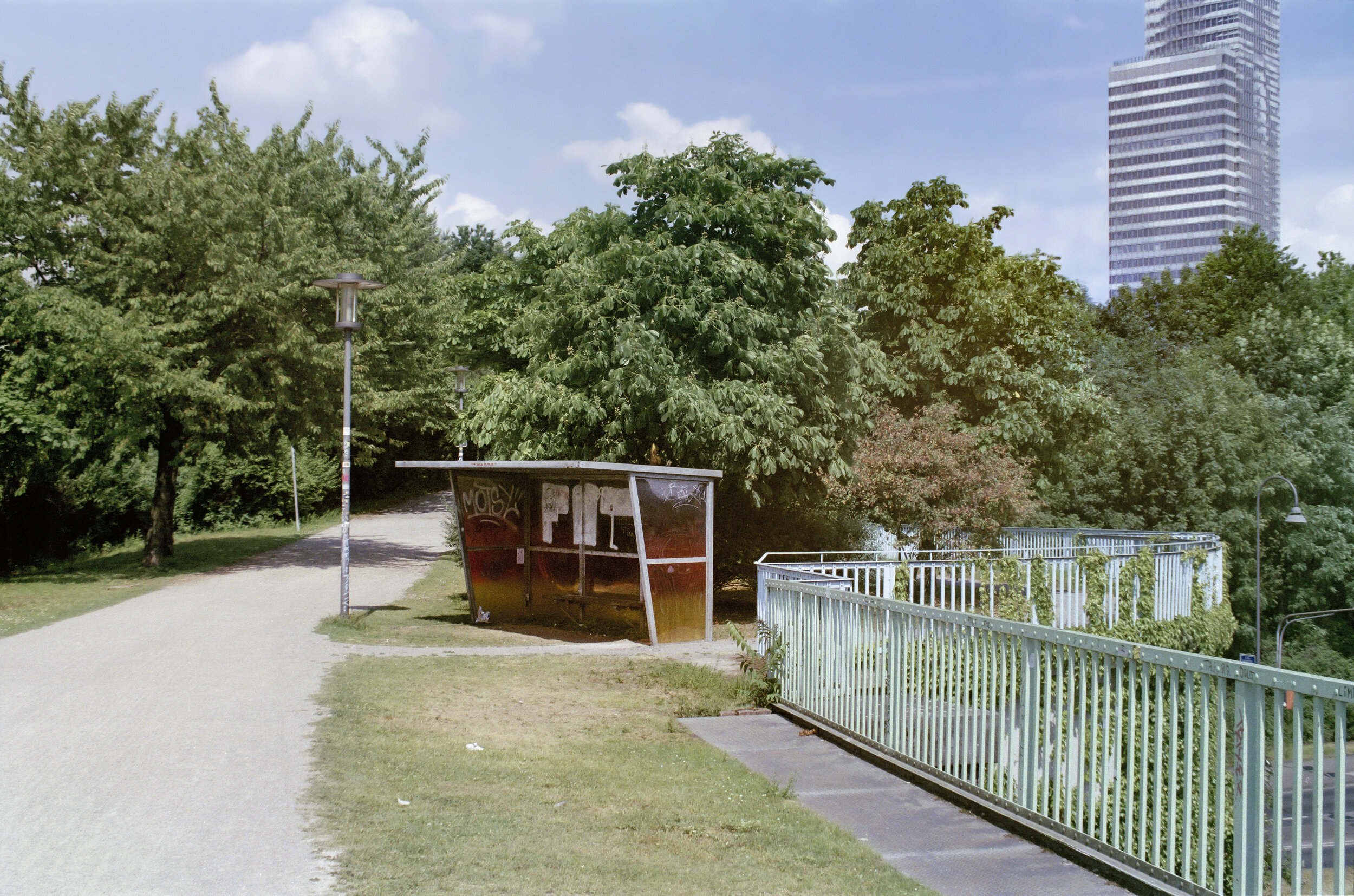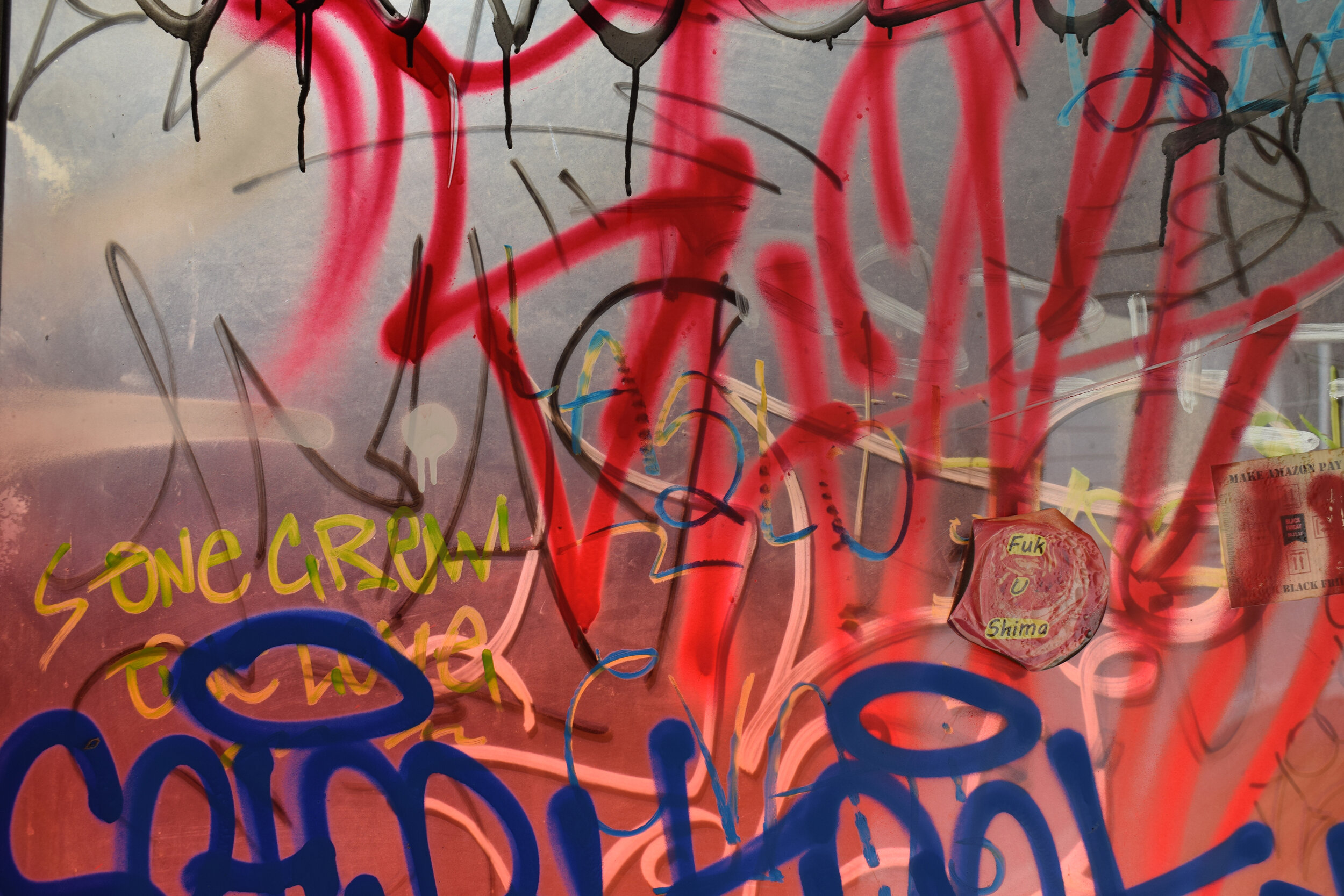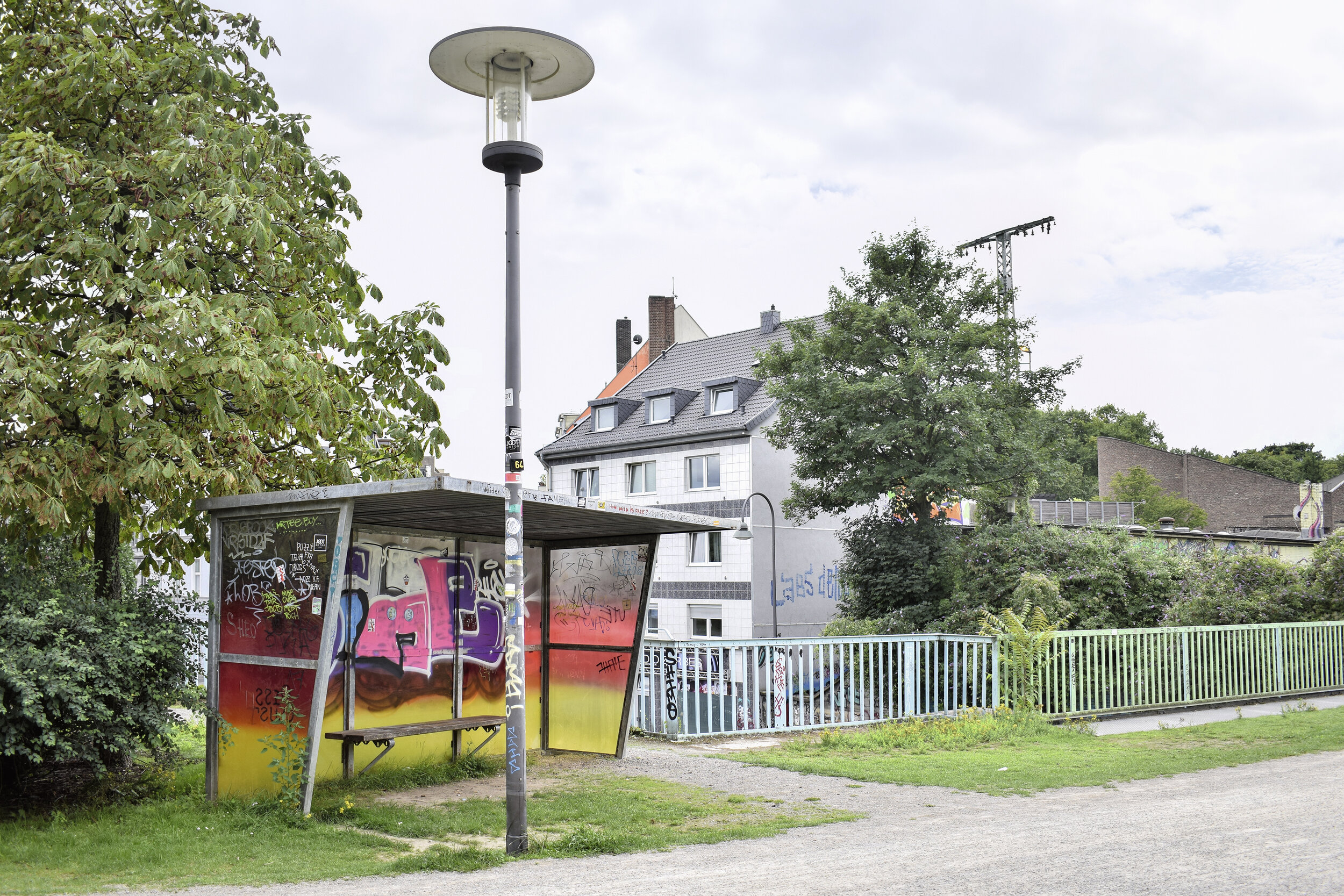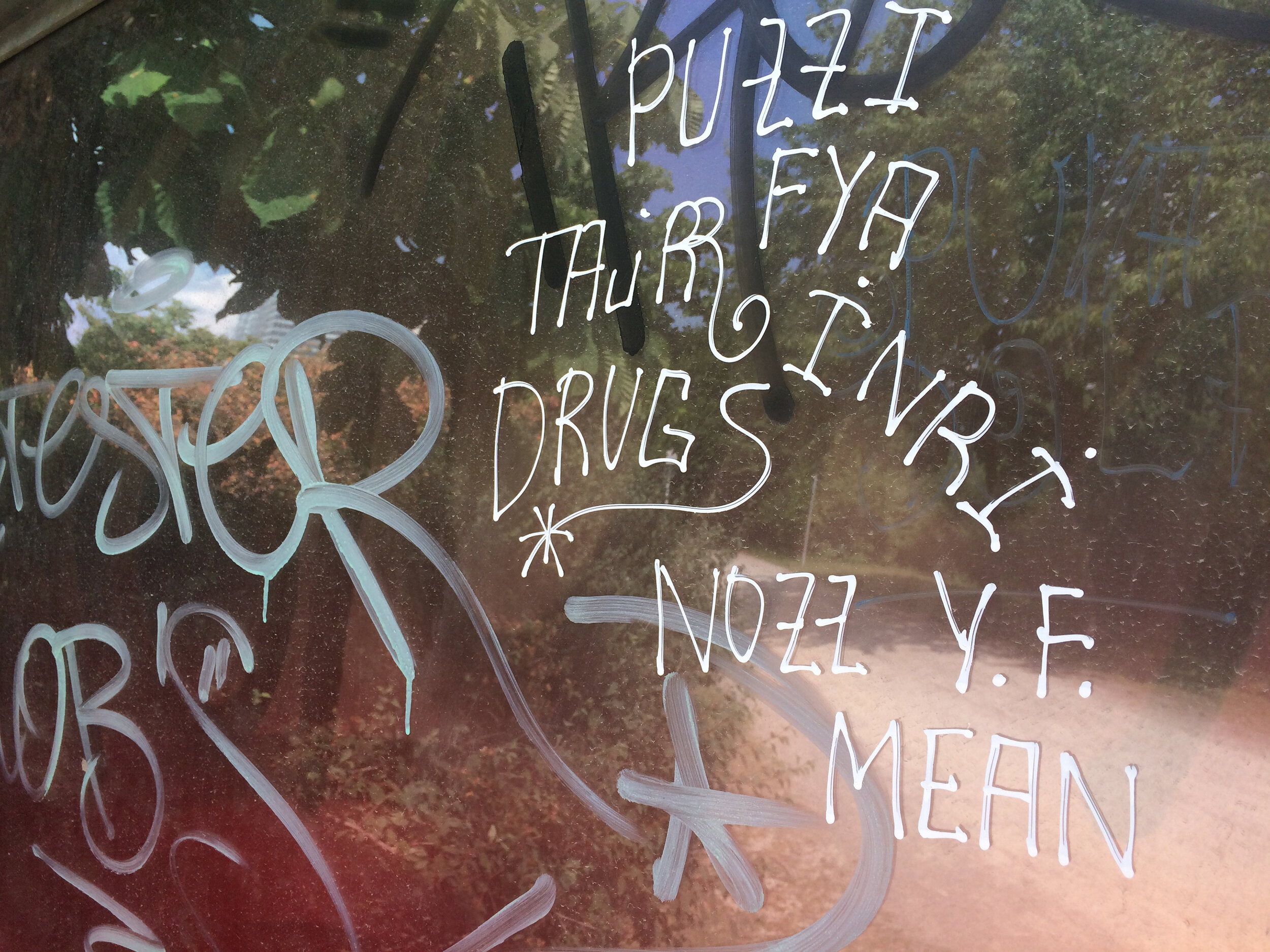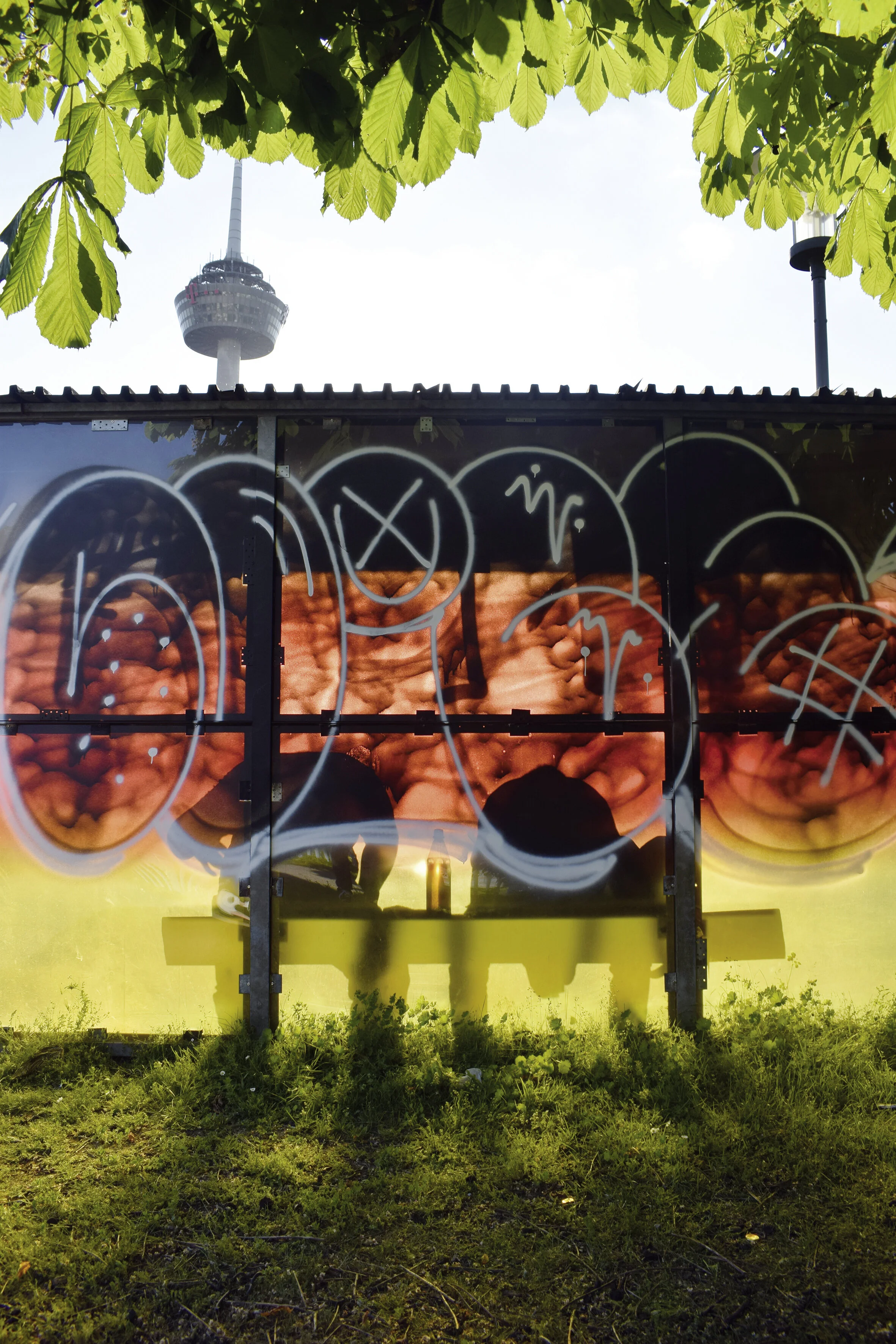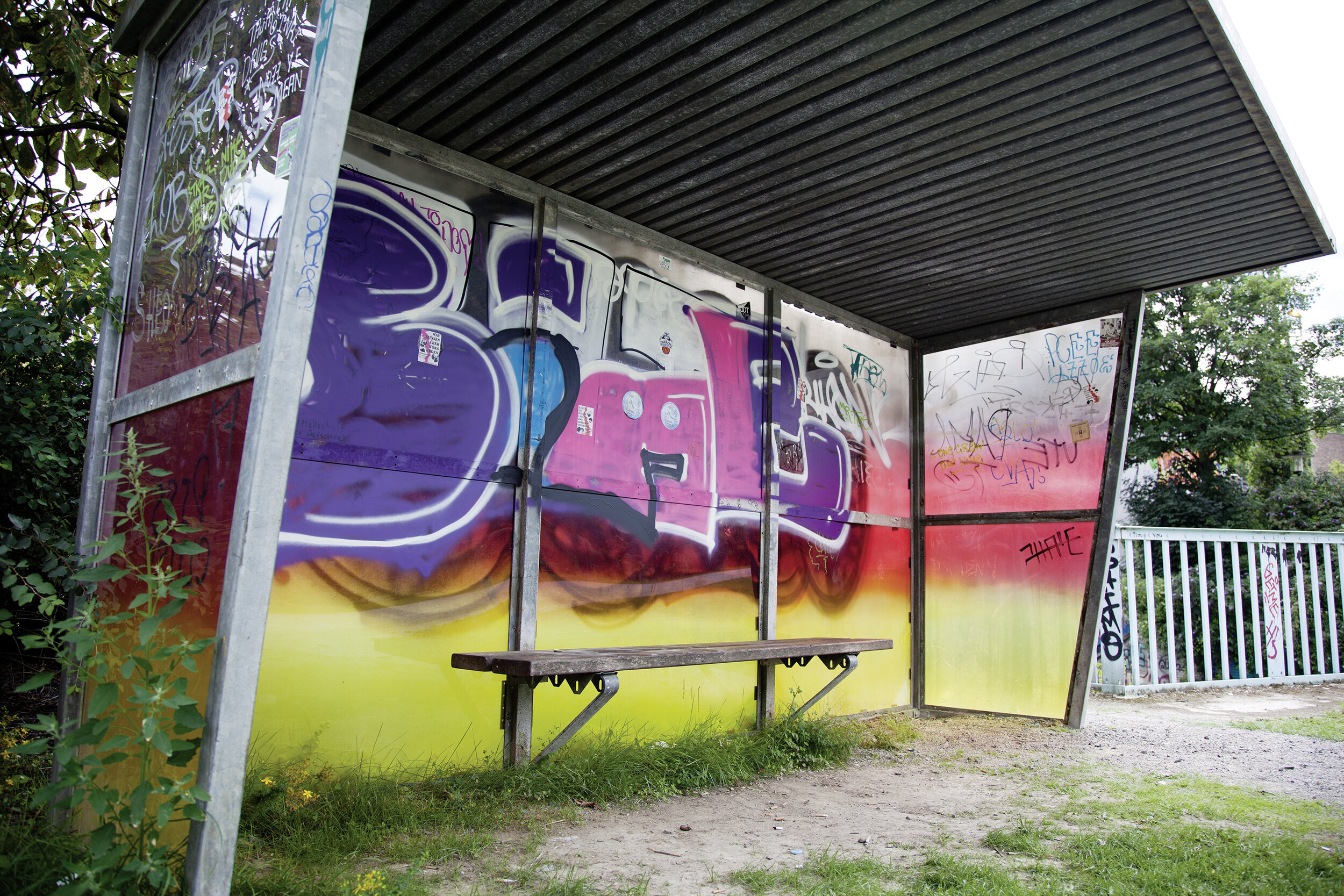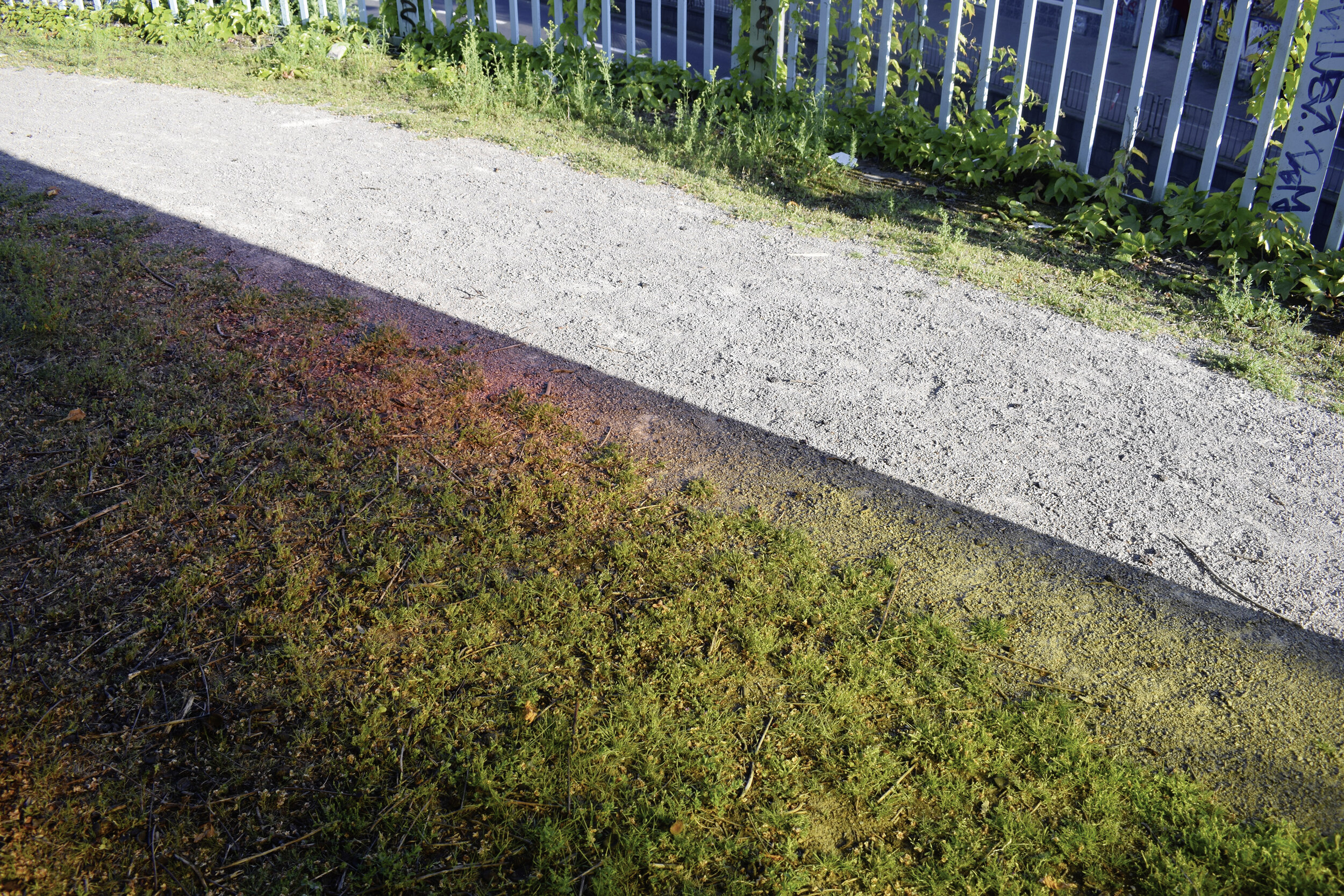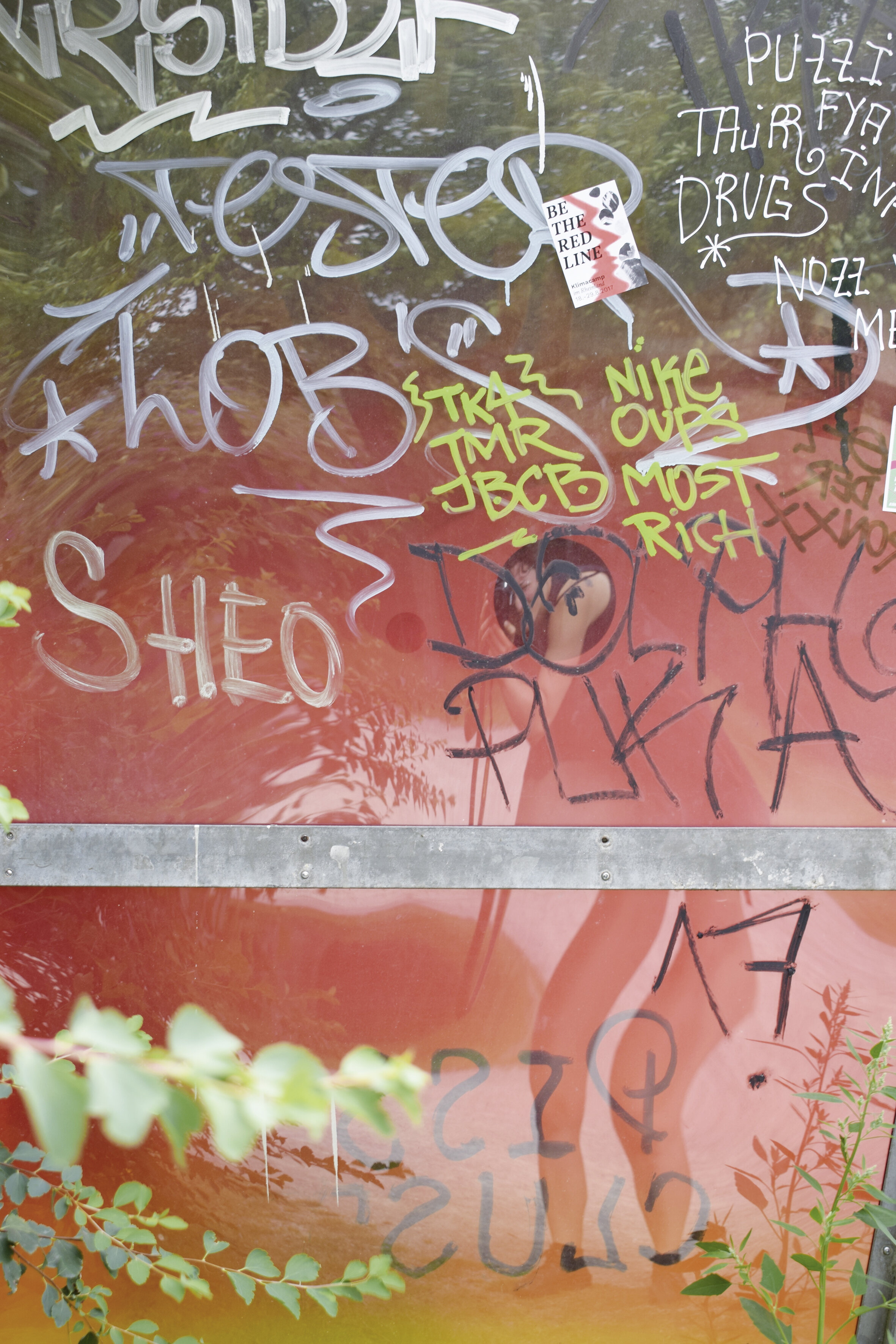Bus Stop Germany, 2017
Bus shelter, polycarbonat, airbrush, graffiti, approx. 420 x 230 x 220 cm / St.Open #1, co-work with Vera Drebusch
The beginning of April 2017 saw the opening of the Bushaltestelle Deutschland (Bus Stop Germany) on the former railway bridge between the Media Park and the City Park in Cologne, the first of four bus stops in the project St.Open.
The bus shelter, with its gradient black-red-yellow design became a meeting place for a variety of different people: teenagers kissing, homeless people and pedestrians all stop there to admire the blue skies visible over the train tracks and beyond the Cologne TV tower, while there they leave traces of their visits behind.
The walls of the bus shelter were replaced with translucent polycarbonate boards modified with an airbrush technique. The entire surface of the boards are colored with black, red and yellow, but unlike the sharp line separation of the German flag, the colors here merge and mix into each other. The sunlight shines through the boards of the bus stop taking the colors with it. In doing so, the space of the bus shelter itself is projected onto its surroundings as black, red and yellow shadows, depending upon the position of the sun the environment is soaked in the colors of the German flag.
Thus the somewhat profane architecture of the 1970’s bus stop appears like a sacred moment as it begins to glow. This illumination stands in contradiction with the colors of the German flag. Even though the color gradient separates them from the context of the flag, its symbol still remains clearly recognizable as such.
Germany itself has become a symbol over recent years. Since taking in hundreds of thousands of refugees it has gained a new character and a recoded external impact in global perception. For many, Germany is a place of longing, a haven of human rights. But not everyone can stay here, often it is just one stop on an uncertain journey without perspective. Over recent years the national flag has regained a strong symbolic power in Germany. It is currently far more present and can be seen displayed in public spaces.
The bus shelter is a waiting area, a place of expectation, of rest and of transit. It frames and collects passengers in urban spaces, in turn making them visible. At the same time, it offers a shelter, in which a temporary, coincidental community and a juxtaposition of similar or opposing feelings and thoughts can arise.
The temporary installation is both empty and open. It stands, alone and abandoned on the underpass, appearing like an illuminated oasis, that can also be seen from the passing street below, which was originally planned as a city motorway. It seems to await its usage, as if it would like to set a statement.
The concept for the piece Bushaltestelle Deutschland and its transformation (writings, tags, sticker) was completed by the permanent public intervention of its visitors.
Photo: Helmut Nick, Selma Gültoprak
